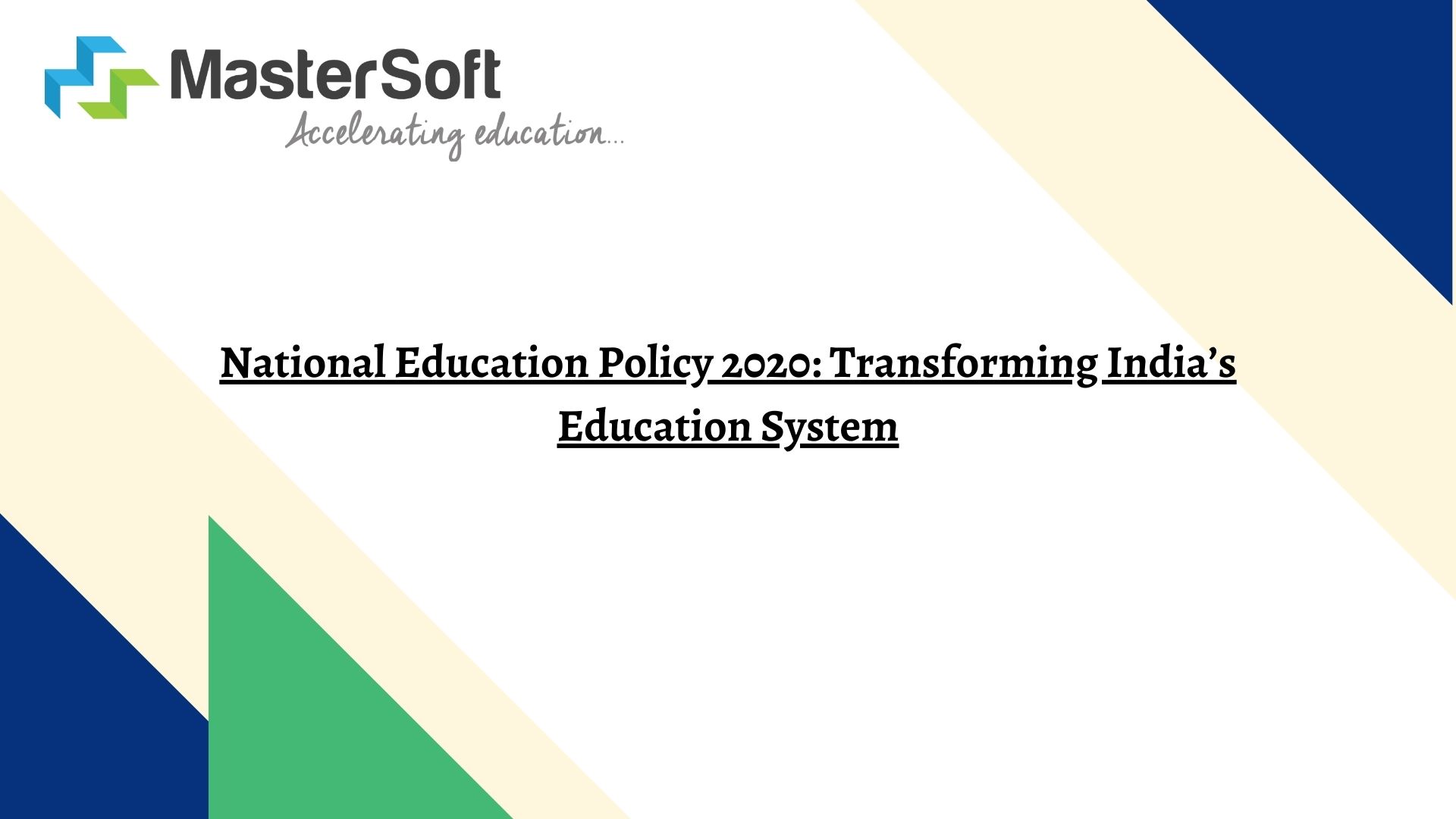National Education Policy 2020: Transforming India’s Education System
The National Education Policy (NEP) 2020 marks a historic shift in India’s education system, aiming to modernize learning methodologies, improve...

The National Education Policy (NEP) 2020 marks a historic shift in India’s education system, aiming to modernize learning methodologies, improve accessibility, and enhance the overall quality of education. Introduced by the Government of India, NEP 2020 replaces the previous National Policy on Education (1986) and outlines a vision for a holistic, multidisciplinary, and flexible education system aligned with the demands of the 21st century.
In this blog, we will delve into the key features of NEP 2020, its impact on school and higher education, and the potential challenges in its implementation.
Key Highlights of NEP 2020
NEP 2020 introduces significant reforms across all levels of education, from early childhood to higher education. Some of its major highlights include:
1. Restructuring of School Education (5+3+3+4 System)
The policy replaces the traditional 10+2 structure with a 5+3+3+4 framework, ensuring a more developmentally appropriate education system:
- Foundational Stage (5 years): Age 3-8 (Preschool to Grade 2)
- Preparatory Stage (3 years): Age 8-11 (Grades 3-5)
- Middle Stage (3 years): Age 11-14 (Grades 6-8)
- Secondary Stage (4 years): Age 14-18 (Grades 9-12)
2. Focus on Early Childhood Care and Education (ECCE)
The policy emphasizes universal access to quality early childhood education through Anganwadis, preschools, and play-based learning to build a strong foundation for children.
3. Emphasis on Multidisciplinary Learning
NEP 2020 promotes flexibility in subject choices across science, arts, and vocational streams. Students can select subjects based on their interests rather than being confined to rigid streams.
4. Introduction of Vocational Education
To equip students with practical skills, vocational education will be integrated into the curriculum from Grade 6, including internships and hands-on training.
5. Holistic Assessment System
The board examination structure will undergo major changes, focusing on conceptual understanding and application rather than rote memorization. Exams will be made easier, with students allowed to take them twice a year to improve scores.
6. Promotion of Regional Languages
NEP 2020 emphasizes mother tongue or regional language as the medium of instruction up to Grade 5 (preferably till Grade 8) to ensure better comprehension and cognitive development.
7. Higher Education Reforms
- Multidisciplinary Institutions: Colleges and universities will transition into multidisciplinary institutions offering a variety of courses.
- Four-Year Undergraduate Degrees: The traditional three-year degree will be replaced with a four-year undergraduate program with multiple exit options.
- Academic Bank of Credits (ABC): Students can store academic credits digitally and transfer them between institutions.
- Single Higher Education Regulator: The Higher Education Commission of India (HECI) will replace multiple regulatory bodies such as UGC and AICTE.
8. Digital Learning and Technology Integration
NEP 2020 promotes digital learning through initiatives such as:
- National Educational Technology Forum (NETF): A platform to encourage technology-driven learning.
- Expansion of Online Education: Virtual labs, e-content, and AI-driven learning models will play a significant role in future education.
9. Teacher Training and Professional Development
To improve teaching quality, NEP 2020 mandates:
- A four-year integrated B.Ed. degree as the minimum qualification for teachers.
- Regular teacher training programs and continuous professional development.
10. Universalization of Education
NEP 2020 aims for 100% Gross Enrollment Ratio (GER) in school education by 2030, ensuring universal access to quality education for all children.
Benefits of NEP 2020
1. Student-Centric and Holistic Learning
The new education structure emphasizes skill development, critical thinking, and creativity, moving away from rote learning.
2. Greater Flexibility and Multidisciplinary Education
Students can choose subjects freely and explore multiple disciplines, making education more dynamic and interest-driven.
3. Enhanced Access to Education
With digital learning initiatives and regional language instruction, NEP 2020 aims to make quality education accessible to all, including rural and underprivileged communities.
4. Strengthened Higher Education System
The introduction of multiple entry-exit options, credit transfer, and multidisciplinary universities allows for greater mobility and flexibility in higher education.
5. Improved Teacher Quality
By setting higher standards for teacher education and professional development, NEP 2020 ensures that educators are well-equipped to guide students effectively.
Challenges in Implementing NEP 2020
While NEP 2020 presents a progressive vision, its implementation comes with challenges:
1. Infrastructure and Resource Allocation
Upgrading schools and colleges to meet NEP standards requires significant funding and infrastructure development, especially in rural areas.
2. Training of Teachers
Proper training programs and digital literacy initiatives are required to help educators adapt to new teaching methodologies.
3. Bridging the Digital Divide
While online education is a key focus, many students in remote areas lack access to digital devices and the internet, creating disparities.
4. Gradual Transition and Policy Execution
NEP 2020 is a long-term reform plan that needs careful phase-wise implementation, ensuring institutions and stakeholders adapt smoothly.
Conclusion
The National Education Policy (NEP) 2020 is a transformative step toward a modern, inclusive, and holistic education system in India. By focusing on skill-based learning, flexible subject choices, digital education, and higher teacher standards, NEP 2020 aims to equip students with the knowledge and skills needed for the future.
However, effective implementation, continuous monitoring, and collaboration between government bodies, educational institutions, and stakeholders will be essential for its success


